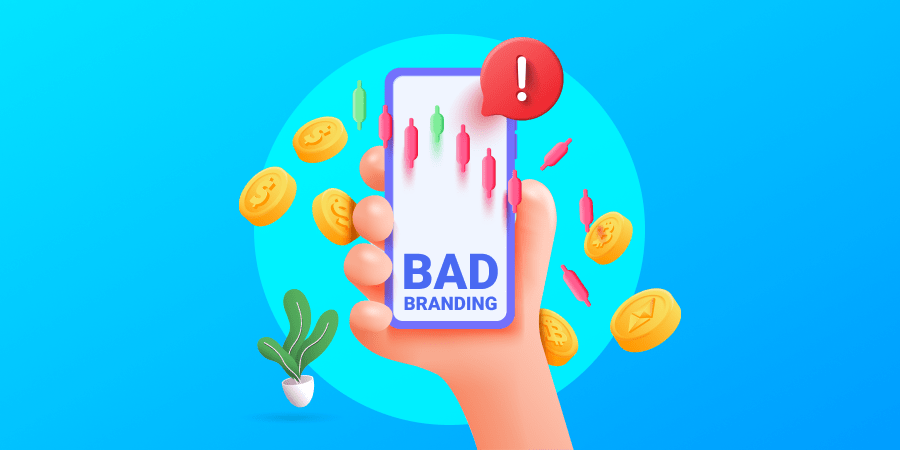Branding is a powerful tool that allows businesses of all sizes and across industries to communicate their values, stand out from competitors, showcase their unique value proposition and build trust with consumers.
However, bad branding can have the opposite effect, confusing customers, damaging a company’s reputation, and even placing a business at the doors of bankruptcy.
In this post, we’ll explore some of the most common culprits of bad branding, share bad branding examples from well-known companies, and offer key strategies for avoiding these mistakes.
Digital Silk develops authentic brands. Request A Quote
Bad Branding vs. Good Branding
First and foremost: What is it exactly that sets apart good branding from bad branding?
Good branding is clear, consistent and authentic branding that creates an emotional connection and establishes trust with the target market.
In contrast, bad branding is confusing, inconsistent and/or inauthentic branding that positions a brand poorly in the eyes of consumers.
Branding Gone Bad: Top Mistakes To Avoid
There are several common mistakes that businesses make when it comes to branding.
By understanding how these practices create detrimental cracks in a brand’s foundation, you can avoid making the same mistakes in your own branding efforts.
1. Branding As An Embellishment
What do we mean by branding as an embellishment? We mean branding as an afterthought — throwing together some aesthetically pleasing colors and a logo or tagline, without an intentional strategy in place.
Instead, a branding strategy should be a foundational element of your business, used to accurately and authentically present your brand identity to consumers.
Investing in branding simply to add color to your presentation will never help you reach your goals in terms of brand awareness, recognition and loyalty.
2. Branding As Smoke & Mirrors
Another common mistake is using branding to hide underlying issues or in your products or services.
You might hire a branding expert and designers hoping to conceal the flaws in your offering with entertaining messaging or pretty colors.
However, customers are usually savvy enough to see through this and will quickly lose trust in your business once they realize that you’re misleading them.
3. Failing To Define Your Unique Value Proposition
Before investing in branding, it’s important to define what’s unique about your offering. How will your product or service benefit the consumer? What do you offer that your competitors don’t?
A key part of branding is communicating your unique value. There’s no way to do this, of course, if it’s not properly defined to begin with. Everything from your logo to your tagline, messaging and other key elements should revolve around your UVP.
If you’re struggling with keeping your messaging consistent, try starting with developing a consistent communication strategy.
4. Cementing Your Brand
A brand should be a living entity that evolves over time, as factors like the market, technology, public perception or audience values change.
Cementing your brand and refusing to grow or evolve as needed will almost undoubtedly lead to your downfall. Do not assume that what worked 20 years ago will still work today.
This doesn’t mean that every business is headed towards a complete rebrand at some time or another. From a light refresh to a new product or more modern logo, changes can be minor or significant.
Take the Belgian brewery Stella Artois, for example. The brand has been using the same horn logo since 1366, holding onto its traditional roots.
However, in 2013 it released a cider, as an effort to expand its reach and cater to the growing demand.
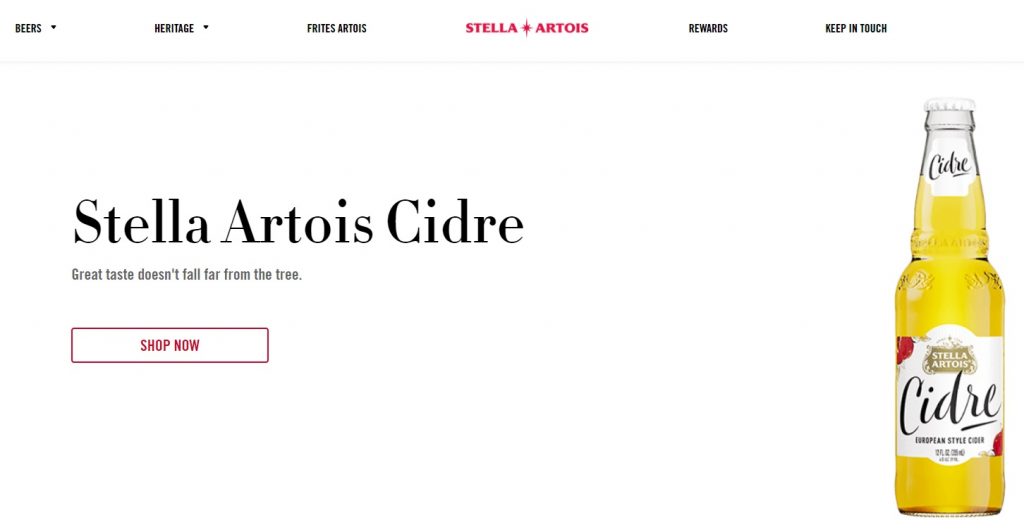
5. Not Living By The Book
According to a recent report, maintaining a consistent brand image across all communication channels can result in a revenue increase of 10% to 20%.
Your brand strategy and brand book are there to provide clear guidelines for your brand presentation. While implementing these guidelines religiously will result in brand recognition and trust, failure to maintain consistency will leave your audience confused, doubtful and running in the other direction.
6. Vague Messaging
Clear and concise messaging is key to effective branding. Vague messaging can confuse your customers, and even damage your brand.
Take jewelry retailer Pandora, for example. In an ad campaign, the brand once used: “Find your extraordinary. Embrace your journey. Trust the universe.”
While the message was intended to be inspirational and aspirational, it instead leaves consumers scratching their heads.
It doesn’t provide any specific information about the brand’s offering or the benefit to the consumer. In fact, we’re not convinced it says anything at all.
Take the time to carefully craft a meaningful message that will resonate with your target market, and ensure that it is consistent across all of your marketing channels.
7. Insensitivity
Insensitivity to cultural or social issues can leave an unpleasant taste in consumers’ mouths and be incredibly damaging to your brand.
For example, in 2017, Audi released an advertisement for their latest car that featured a scene from a Chinese wedding. The ad showed a mother-in-law walking to the altar to inspect her future daughter-in-law.
She proceeded to pinch the woman’s lips, pull her ears, and examine her teeth and tongue before giving her approval with the tagline, “an important decision must be made carefully.”
Unfortunately, the ad received backlash as some viewers felt it objectified and devalued women, and even compared the woman to a car. Although Audi intended the ad to be humorous, it ultimately ended up being offensive to many viewers.
8. Lack Of Employee Onboarding
It’s important to remember that your employees are your brand ambassadors. They are the ones who interact with customers on a daily basis, represent your brand values, and contribute to the brand’s success.
But without proper onboarding, employees may not fully understand your brand, its values, and its personality, which can lead to inconsistent branding and messaging, and negative customer experiences.
It’s crucial to provide comprehensive onboarding for employees, including training that covers your brand’s values.
9. Poor Employee Treatment
A company’s treatment of its employees can also have a significant impact on its branding efforts, as the endorsement of a brand by its employees is highly effective — a fact that many brands seem slow to catch on to.
According to a recent report, 70% of people trust regular employees more than brand messages.
If employees are unhappy, overworked, or feel undervalued, they may not be motivated to represent the brand positively.
For example, since 1938, the law has mandated that hourly employees be paid 1.5 times their regular wage when working overtime.
However, discount retail company Family Dollar has come under fire for avoiding this obligation by classifying their low-wage workers as “managers,” paying them a fixed salary and overworking them.
Even if employees work 60 or 70 hours per week, the company does not have to pay them overtime, since they are not classified as hourly workers.
Following a lawsuit by a group of Family Dollar employees, it was discovered that some of them are required to work so many hours that they must stay overnight and sleep at their stores.
Talk to our team of branding specialist. Set Up A Consultation
7 Bad Branding Examples From Well-Known Brands
Even some of the most successful and recognizable brands have made branding mistakes that have caused damage to their reputation and led to financial losses.
Check out our top examples of brands that have stumbled in their branding efforts:
1. Coca-Cola
You might be surprised to see such a successful company at the top of our list — let us explain.
In 1985, Coca-Cola changed the formula of its flagship drink in an effort to compete with the growing popularity of Pepsi.
However, the new formula was met with significant backlash from loyal customers, who felt that the company had abandoned its heritage and values.
Coca-Cola eventually brought back the original formula, but what happened in the meantime?
Just weeks after the announcement, the company was inundated with 5,000 furious phone calls per day. The volume of calls grew to 8,000 daily by June, prompting the company to hire additional operators.
In protests organized by grassroots groups like “Old Cola Drinkers of America,” consumers emptied their New Coke bottles into sewer drains.
2. Gap
In 2010, clothing retailer Gap changed its iconic logo in an effort to modernize the brand.
However, the new logo was met with widespread criticism from customers and design professionals alike, who felt that it lacked the personality and identity of the original logo.
After only six days, Gap reverted back to the original logo, but the incident demonstrated the importance of staying true to your brand identity and values when making changes.
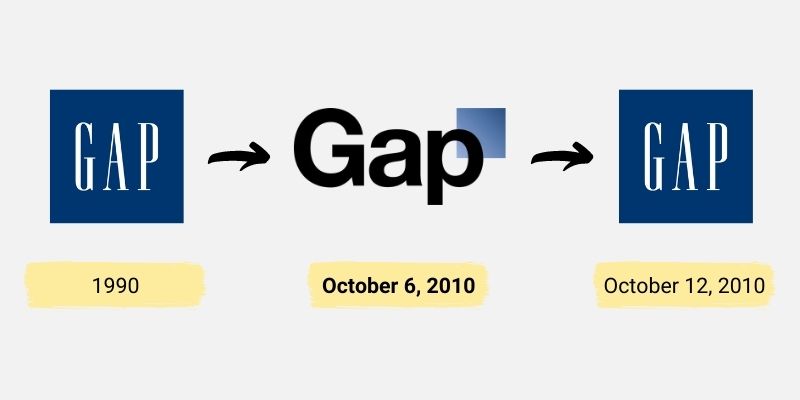
3. Pepsi
In 2017, Pepsi released a controversial ad featuring model Kendall Jenner, in which she joins a protest and offers a can of Pepsi to a police officer, seemingly ending tensions between the protesters and police.
The ad was met with significant backlash for trivializing and appropriating social justice movements, and the company eventually pulled the ad and issued an apology.
The incident demonstrated the importance of being sensitive to social issues and avoiding tone-deaf messaging.
4. Kodak
Film brand Kodak, for many years, enjoyed unmatched success all over the world. By 1968, it had captured about 80% of the global market share in the field of photography.
In the 1990s, Kodak failed to adapt to the rise of digital photography, despite being a pioneer in the industry.
The company’s failure to recognize the shift in consumer behavior and adapt its brand accordingly, ultimately led to its bankruptcy in 2012.
Business growth and branding need to work hand-in-hand. Good branding requires a deep understanding of consumer perception and behaviors as well as how they are changing over time.
These branding insights can stir business decisions and improve resilience.
By embracing digital photography earlier and investing in research and development, Kodak could have maintained its leadership position in the industry.
Kodak also could have reduced its reliance on a single product category and generated revenue from multiple sources — some have speculated that acquiring or partnering with a digital imaging company would have been the right move.
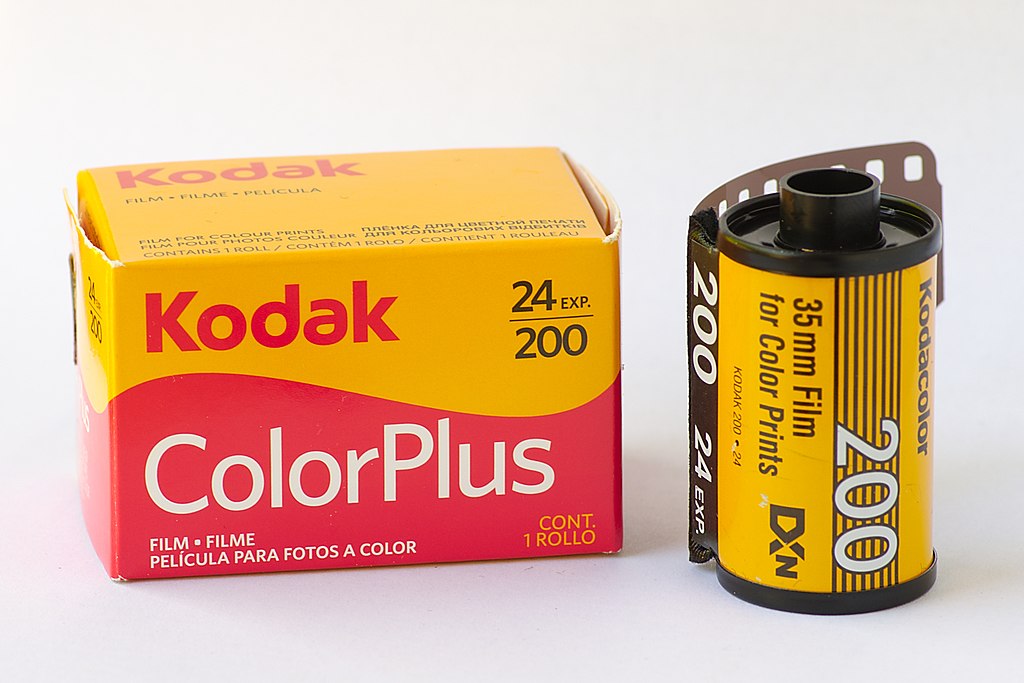
5. Heineken
In March of 2018, beer company Heineken faced significant backlash over a commercial that demonstrated a lack of sensitivity.
The 30-second advertisement featured a bartender passing a beer over three Black customers and giving it to a woman with lighter skin. The tagline accompanying the ad read “Sometimes, lighter is better.”
The company received a lot of negative criticism from the public saying the advertisement was “terribly racist.”
The commercial ended up being removed from television and other marketing channels, costing Heineken money and reputation in the process.
The main conclusion here is that brand messaging needs to be rooted in sensitivity and brand values.
6. Kellogg
In 2013, Kellogg, a provider of breakfast foods, claimed that consuming Frosted Mini-Wheats could enhance children’s memory and focus.
In one ad, a voice-over stated: “A clinical study demonstrated that kids who ate a filling breakfast of Frosted Mini-Wheats cereal increased their attentiveness by almost 20%”
However, one journalist found that this was actually a study conducted by Kellogg itself, and there was no proof behind the statement.
The consequences of the lie? Kellogg paid a settlement of $4 million in response to a class-action lawsuit that accused the company of running a misleading marketing campaign for its sugary cereal.
If you’re stating information from conducted research, your brand messaging needs to be rooted in truth to build credibility.
7. Amazon
In 2021, Amazon introduced a new logo for their mobile app that surprised many users and generated some not-so-positive feedback.
A blue tape strip was placed on top of the Amazon logo, intended as a nod to packaging.
However, some individuals noted that it bore a resemblance to the toothbrush mustache commonly associated with a certain Nazi dictator.
In response to negative customer feedback and a lot of social media buzz, the tech giant ended up modifying the design to show a folded piece of blue tape instead, without the zigzag edges.
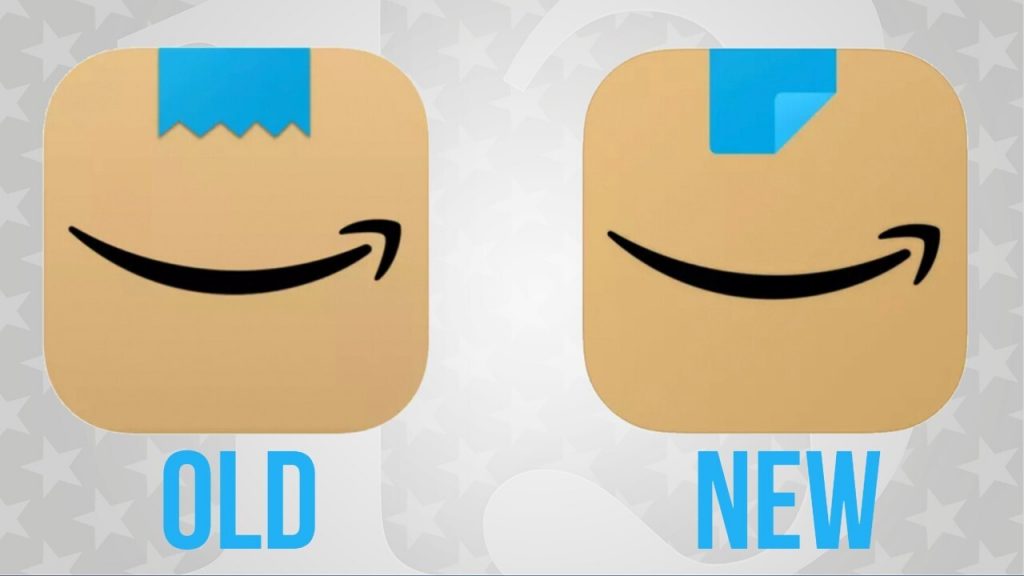
Avoid Branding Mistakes By Partnering With A Trusted Branding Agency
So what does it take to avoid these mistakes, and avoid negative press in the process?
A clear understanding of all aspects of branding, from the smallest detail to the largest.
As a leading branding agency, our team at Digital Silk includes top branding designers and strategists that have years of experience working with brands of all sizes, and across industries.
With every branding project, we conduct thorough research into your industry, competitors and audience to craft a custom brand strategy that’s designed to help you reach your goals — whether you’re just starting out, rebranding or breaking into a new market.
Explore our case studies and see how we help our clients and partners avoid the common mistakes above by using our research to create detailed user personas, identify the ideal positioning for your brand and more.
Our branding deliverables include:
- Custom logo and brand design
- Tailored brand strategy
- Brand positioning
- Brand messaging
- Brand book design
- Brand implementation across channels.
As a full-service agency, we also offer web design and development, marketing, copywriting, consulting and more — we handle all of your digital needs under one roof, in-house.
Key Takeaways On Bad Branding
The best way to avoid bad branding is to understand what makes an effective brand strategy — from authenticity and consistency to understanding your target market and conveying your UVP.
Trusting your brand strategy to the pros can help you avoid negative consumer feedback from untasteful campaigns, and position your brand in a positive light, while growing visibility and recognition.
We offer custom quotes for every project — contact our team to set up a consultation!
"*" indicates required fields


